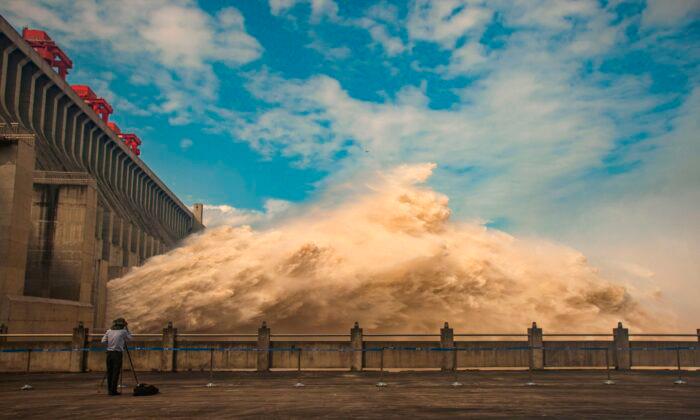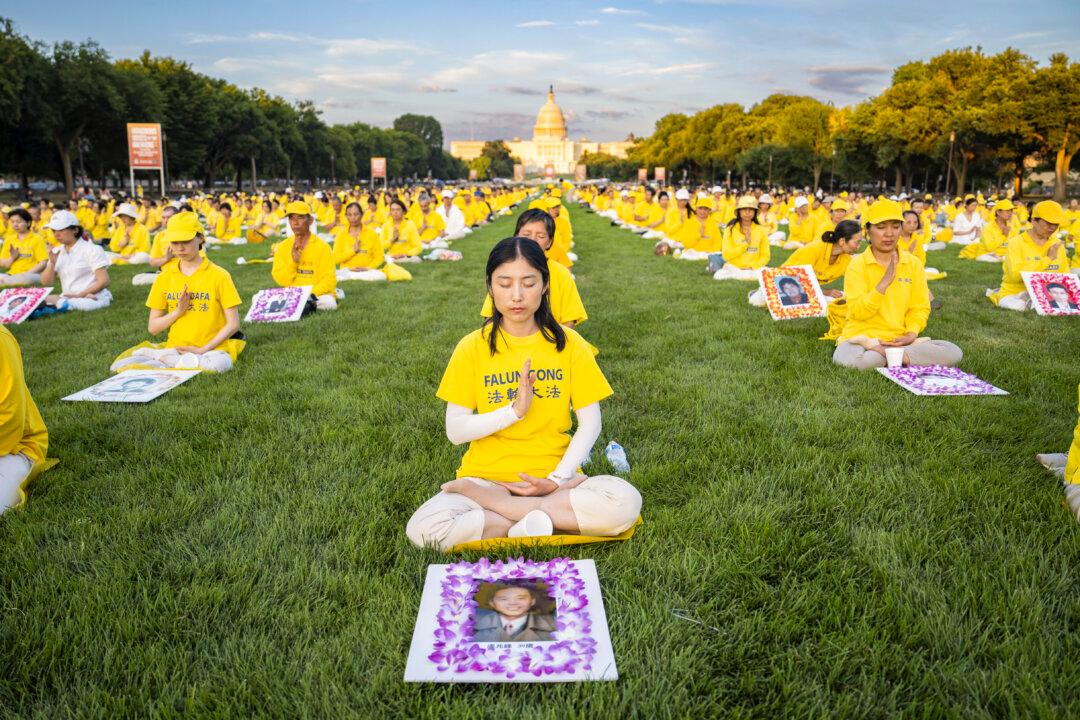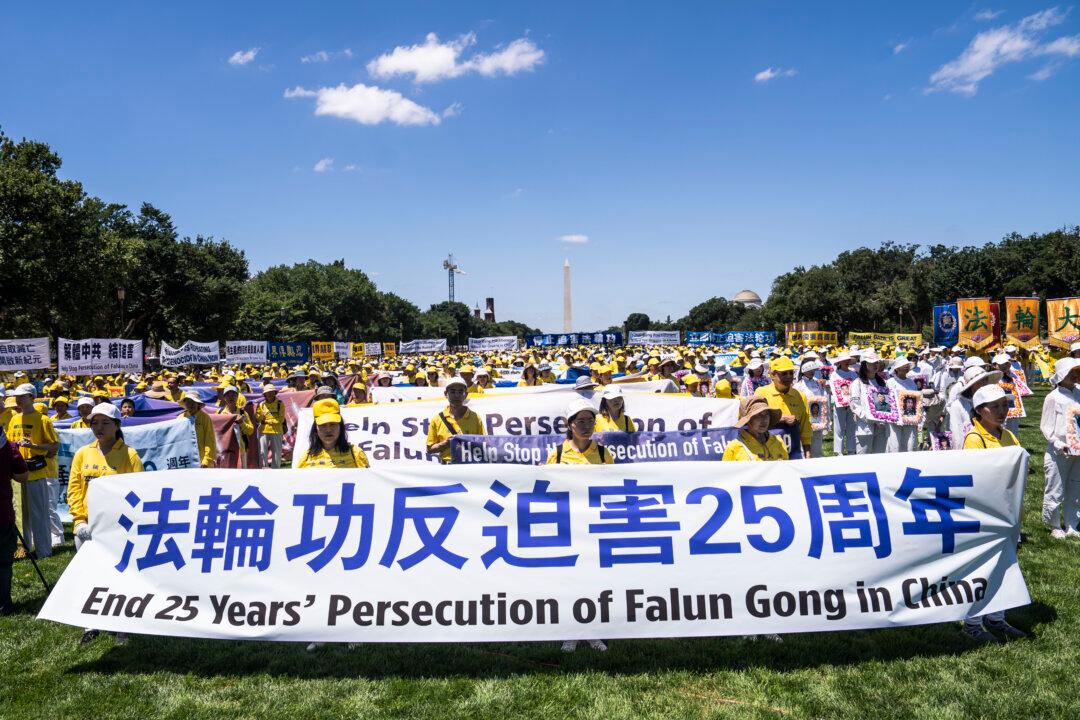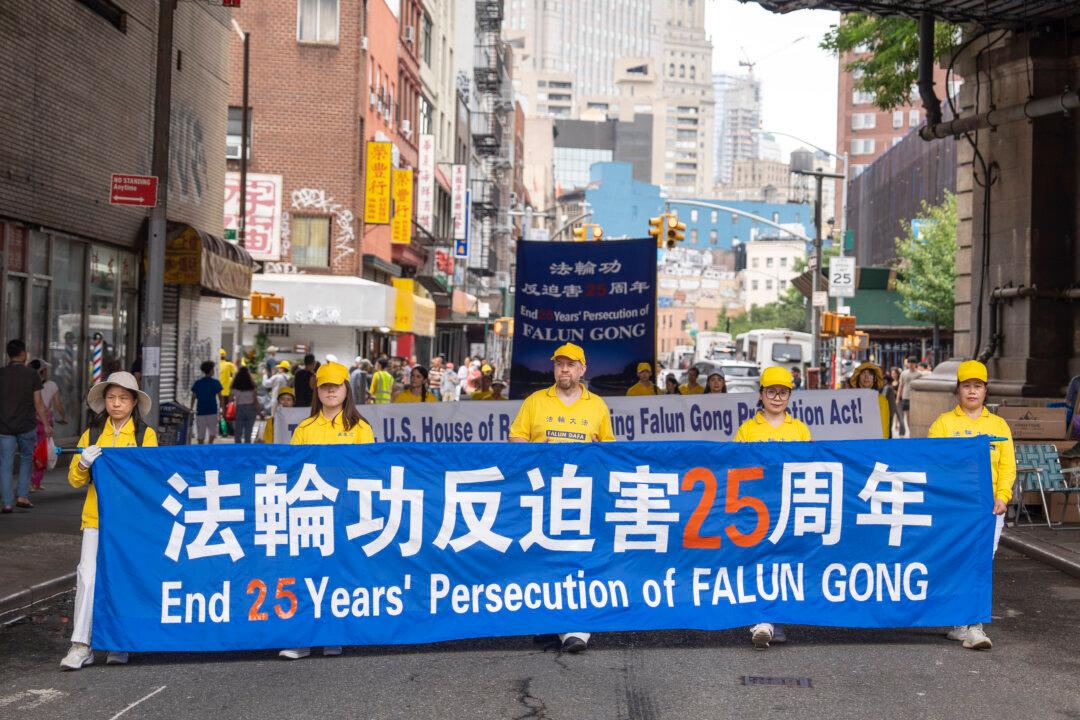According to the Chinese Water Resources Ministry (CWRM), China’s main flood season in the south officially began on June 1; since May, at least 97 rivers have exceeded warning levels, an increase of about 10 percent from a year earlier as of May 27.
Official data showed that 89 rivers were flooded above the warning level and 3.709 million people were affected in 18 provinces, including Hunan, Jiangxi, Zhejiang, Fujian, Guangdong, Guangxi, etc.
In the Yangtze River basin, dozens of rivers in the Wu River system (a major tributary of the Upper Yangtze), the Three Gorges region, the Dongting Lake system, and the Poyang Lake system had floods above the warning level, and the entire Xiang River in the Dongting Lake system recorded floodwaters exceeding the warning level.
In 2020, the Yangtze River Basin experienced severe flooding, the worst since 1998, with the highest water level in Chongqing since 1981, and a rare occurrence of flooding in the urban area of the city.
The Three Gorges Dam (also known as the Three Gorges Hydropower Station and the Three Gorges Project) is located in the upper reaches of the Yangtze River, and there are more than 50,000 dams in the region.
In a regular State Council meeting on April 22, the CWRM introduced the current task focused on ensuring the safety of the reservoir during the flood season. The CWRM explained, “more than 80 percent of the 98,000 reservoirs in China were built in the 1950s and 1970s.”

Ticking Time Bombs in China
“There is no river in China without reservoirs and dams. Even the rivers that flow through Tibet’s Lhasa and Xigaze also have many reservoirs and dams. The density of reservoir dams in China is unprecedented in the world,” Dr. Weiluo Wang, wrote in a communication to Chinese readers in 2019.Wang is a renowned expert in land planning and water conservation who is now living in Germany.
“The most terrible thing is that 40 [percent] of the 90,000 reservoir dams are dangerous dams, which are unsafe, and there are tens of thousands of reservoirs and dams deserted.
“These are time bombs that may explode at any time,” he wrote.
He also explained that the dangerous dam reservoir was exactly the culprit of the various severe floods throughout China in the Communist regime’s history.
Origins of the Flood Disasters in Modern China
Since the Chinese Communist Party (CCP) took power in 1949, the regime has built 90,000 reservoir dams; half of the world’s dams are now located in China.In a recent interview with The Epoch Times, Wang said that regarding the 98,000 reservoirs in China, it does not include small reservoirs that were not up to par and the fact is that even the CWRM itself is not clear about the exact number of reservoirs built after the CCP took power.

Jiao Yong, former Vice Minister of Water Resources, now Chairman of Chinese National Committee on Large Dams (CHINCOLD), admitted that more than 95 percent of Chinese dams were made of earth and rock, and that they have not been effective in preventing floods. He warned of the safety risks posed by these reservoirs and dams at a conference in 2017.
Wang put it frankly, “The CCP’s dams typically lack technical design.”
He took the flooding of Xingtai in 2016 as an example. The upstream Dongchuankou Reservoir was built without a flood-control gate.
He said, “It was a directional blasting technique (DBT) in 1959 with the help of Soviet experts. Some said that over 200 tons of dynamite were used for the blasting, and others said over 300 tons of dynamite were used. The blasting was done on the mountains on both sides. That was how the reservoir was built. The dam collapsed in 1963 due to flooding from the Hai River, and was rebuilt in 1965. This is a typical reservoir built by the CCP in China.”
The DBT makes use of the energy created by the blasting to throw the mountain rocks in a predetermined direction to form a dam. This technique saves digging, transporting, filling, rolling, etc, by human or mechanical means that are needed otherwise.
Chaotic Management of Reservoirs in China
Wang said that the regime adopted the practice of contracting dam construction in the early 1980s. However, there were no clear terms for reservoir maintenance, and there were conflicts between the interests of the contractors and the safety of the reservoirs.He explained, “The [CWRM] only manages 100 plus large reservoirs, the provincial authorities manage medium-sized reservoirs, and the county and township authorities each manage a group of reservoirs. The township would contract the reservoirs to individuals [for the management], and form a contracting relationship. Who is responsible for the maintenance of the reservoirs? It is not made clear. Under the contract, the contractor has the right to use the reservoir.”
Consequently, the contractor’s interests come from the water in the reservoir.

Wang added: “The more water, the more power generated. This is beneficial for the contractors. They are not willing to discharge water from the reservoir. So the authorities have to pay the contractors to discharge water from the reservoir.
“The CCP had no relief money for the victims of the 2020 flooding because the flood control fund had been given to the contractors.”
Reflecting on the Xingtai flood in 2016, then Minister of Water Resources Chen Lei said that early warnings should be issued in time.
“What Chen Lei did not say is who exactly is the main body to issue the warning. The Flood Control and Drought Relief Headquarters at the central, the provincial, the municipal, or the local, or at the local reservoir management?” Wang explained.
He added, “Who will bear the administrative responsibility for deaths and property losses caused by failure to issue flood release warnings? Who will bear administrative responsibility for the economic losses caused by the issuance of an incorrect flood release warning?”
The Socialist System with Chinese Characteristics
Amidst multiple floods across mainland China, People’s Daily published an article in March, claiming that “investigation and rectification of the small hydropower projects in the Yangtze River Economic Belt have been basically completed.”The CCP spends a lot of money every year on the “rectification” of its reservoirs, which are still becoming increasingly unsafe.
The People’s Daily report also claimed that, during the rectification, the withdrawn hydropower stations were outdated and small, they impeded flood discharge, but were also uneconomical to be repaired.
Wang added that looking back in history, every minister of water resources has demanded more budget for reservoir maintenance after taking office, but the main culprit remains unsolved. They eventually ascribe the failure to the reservoirs’ falling into disrepair over the years and a shortage of central subsidies.
Wang emphasized that the so-called rectification is a way of shirking responsibility. He explained that the rectification actually removed a large number of reservoirs from its system. More than 3,000 reservoirs were delisted while they objectively still exist.
“There is nothing but silt in reservoirs. What will happen to the silt in the 3,000-plus abandoned reservoirs when a flood strikes? If silt-filled water rushes down and blocks downstream river channels, there will be devastating disasters,” said Wang.
Wang gave two examples to illustrate his viewpoint: the 2016 Xiangjiang River flood arose from a dam failure upon a flood strike because a myriad of abandoned reservoirs in Xiangjiang River Basin lacked governance and maintenance; the 2010 Zhouqu mudflow disaster resulted from the impact of a deserted dam which was filled at first and then collapsed. Years of soil collected in the dam was washed off the collapsed dam.

Knowing that the regime cannot simply leave those reservoirs abandoned; rather, it should demolish them and restore ecosystems to their original state. But will the regime take responsibility and do a sensible job?
Expert’s Advice to Local Residents
As for the best advice Wang would give to the tens of millions of Chinese surrounded by the 80,000 plus time bombs, he once wrote: prepare yourself one or more self-inflated rubber boats, enough bottled water and food, flashlights or lighters, life jacket, and learn from the Japanese to prepare yourself a grab and go bag with necessary miscellaneous items, calling devices. When faced with floods from a failed dam, do not shut doors and windows, but open the doors and windows to let the flood pass through.Wang particularly emphasized that people in Fuling and Kaixian County of the Three Gorges Reservoir area should especially be reminded that a majority of residents live in areas below the normal water storage line of the Three Gorges Reservoir, which is over 570 feet above sea level. They rely on the embankment to block the reservoir water. These residents were supposed to be relocated. In order to reduce the number and expenses of the people displaced by the Three Gorges Reservoir, the regime allowed them to stay. Therefore, “if possible, move as fast as you can.”





